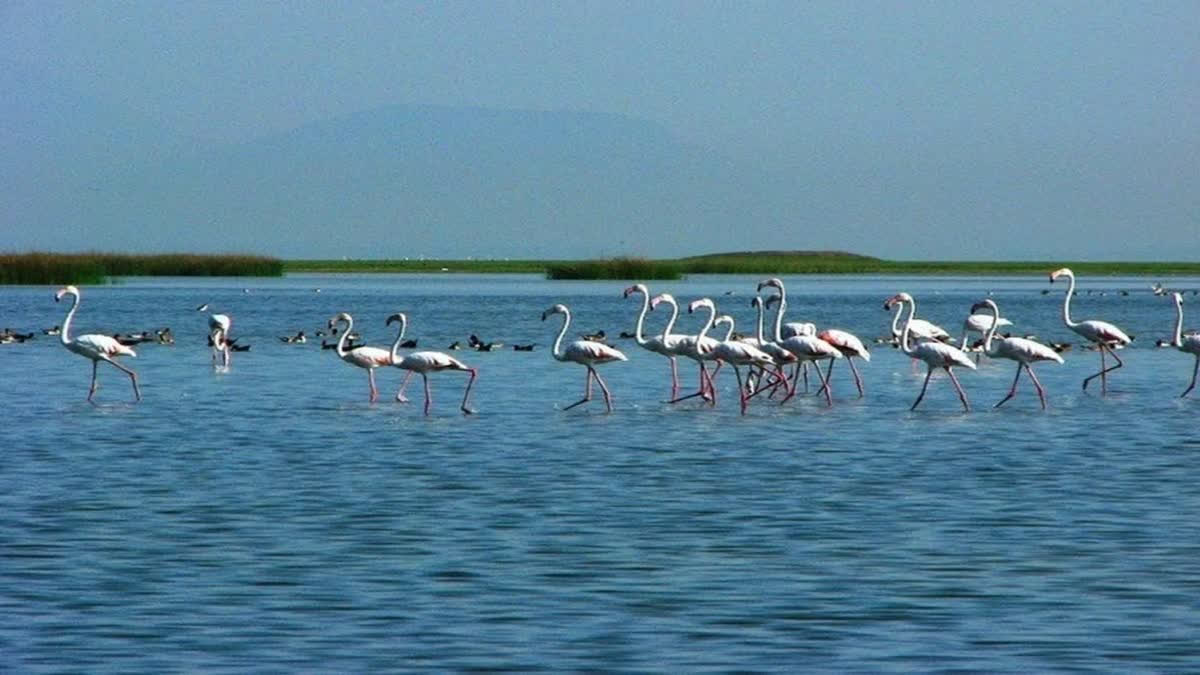Bhubaneswar/Khordha: As the world observed World Exotic Bird Day on Sunday to raise awareness about the protection of migratory birds, Odisha—home to several renowned bird sanctuaries like Chilika Lake and Bhitarkanika National Park—faces a growing environmental crisis. Every winter, millions of exotic birds from regions as far as Siberia, Chile, and Russia migrate to Odisha. However, climate change, pollution, and human activities are now threatening these annual migrations.
Statistics speak on the alarming decline in bird population visiting Chilika and other sanctuaries in recent years. In 2024, 189 species were recorded at Chilika, totaling 11.37 lakh birds—a slight increase from the previous year, but still below past numbers. Similarly, Bhitarkanika and other sanctuaries are seeing fewer birds year after year.
According to environmentalist Jayakrishna Panigarahi, Odisha’s bird sanctuaries are a global attraction, with Chilika Lake being the largest. Over the years, it has served as a breeding ground for thousands of migratory birds that arrive, lay eggs, and rear their young before flying back. But this natural wonder is under threat.
Impact of Climate Change on Bird Migration
Panigarahi explains that migratory birds come to Odisha seeking favourable conditions so that they can escape harsh winters in their native countries. These birds travel thousands of miles, making Odisha’s sanctuaries their nesting grounds. Yet, climate change has begun to alter weather patterns, impacting bird migration. Unpredictable seasons, habitat destruction, and pollution are taking a toll on bird population.
The Double Threat of Pollution and Habitat Loss
“Pollution and habitat loss are affecting the problem all the more,” says Panigarahi. Plastic waste, poaching, and the rise of wind farms and mobile towers disrupt the migratory paths of these birds. Furthermore, rapid urbanization is reducing the availability of trees, food sources, and clean water, leading to homelessness and health issues for many bird species.
So take a look at the number of exotic birds coming to Chilika:
2024 - 189 species 11,37,759
2023 - 1844 species 11,31,929
2021-22 - 10.74 lakhs of 107 species
2020-21 - 12.04 lakhs of 111 species
2019-20 - 10.71 lakhs of 109 species
2018-19 - 10.21 lakhs of 105 species
2017-18 - 8.68 lakhs of 95 species
2016-17 - 9.24 lakhs of 100 species
Birds flocking Bhitarkanika
2024 - 13,0123 birds
2023 - 123867
2021-22 - 1.38 lakhs of 144 species
2020-21 - 1.36 lakh of 121 species
2019-20 - 1.18 lakh of 105 species
Birds visiting Hirakud
2021-22 - 2.08 lakhs of 104 species
2020-21 - 1.03 lakh of 41 species
2019-20 - 0.98 lakh of 93 species
Call for Conservation Efforts
As natural disasters increase due to environmental degradation, the survival of migratory birds and other wildlife is at greater risk. Panigarahi stresses the need for collective action, “Human activities, in the name of development, are destroying ecosystems. If this continues, not only birds but other wildlife species will face extinction.” The data reflects this concern. The number of birds arriving in Odisha’s sanctuaries has fluctuated over the past decade, with declines observed in some areas. Protecting these species has become more crucial now than ever.



